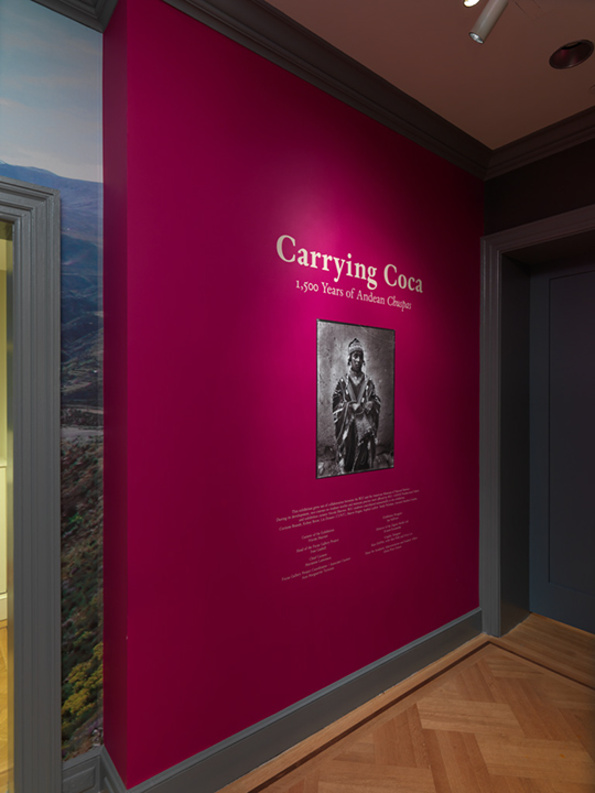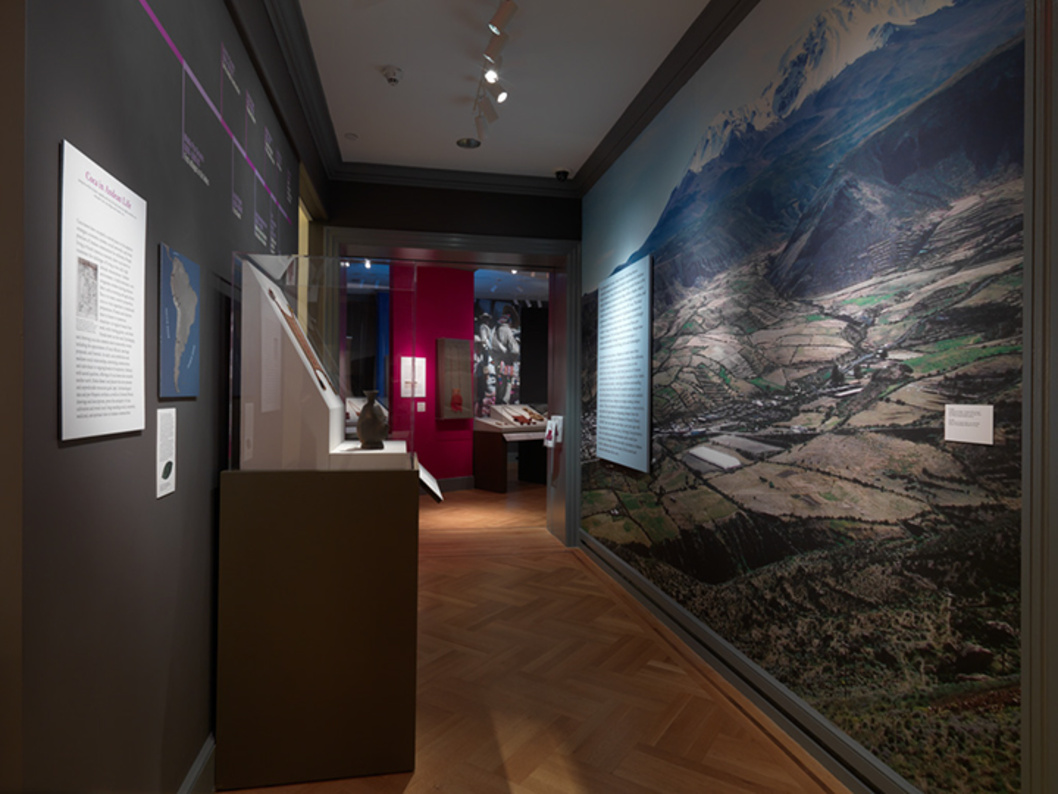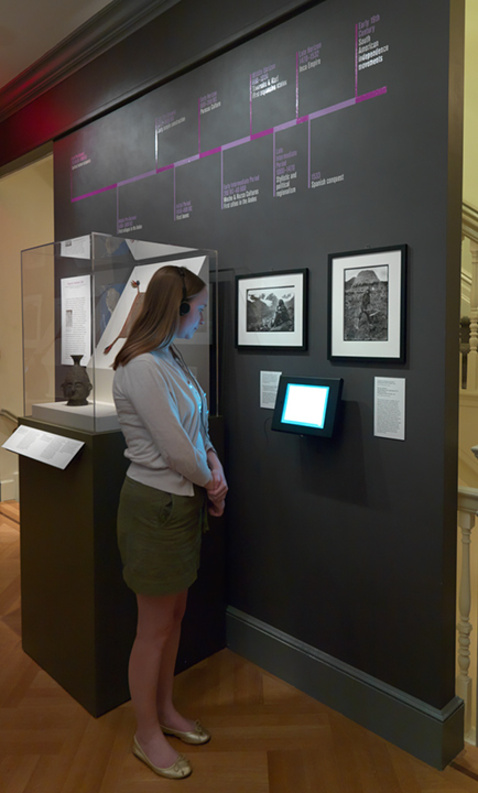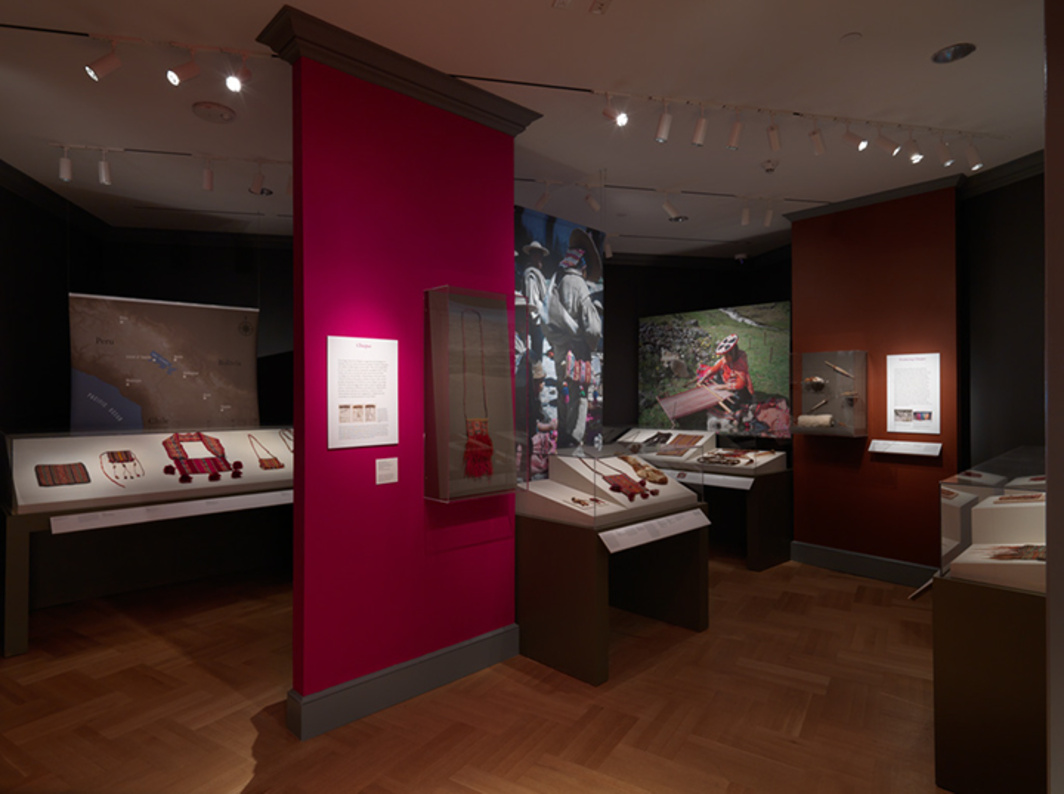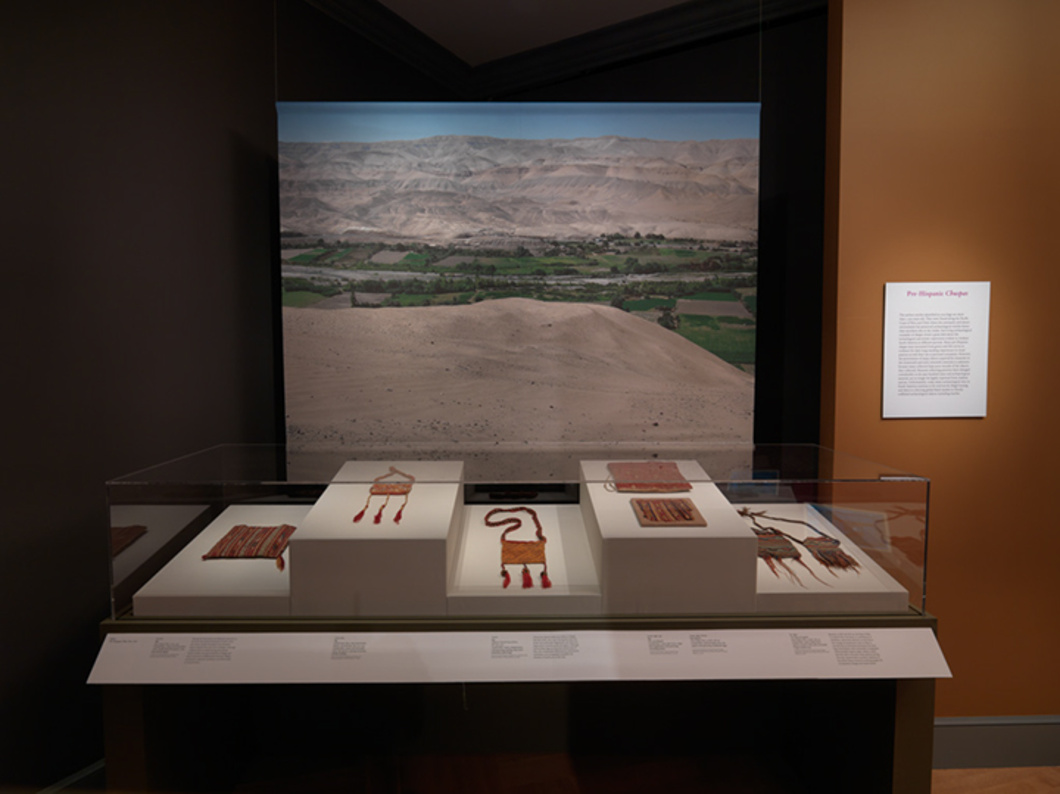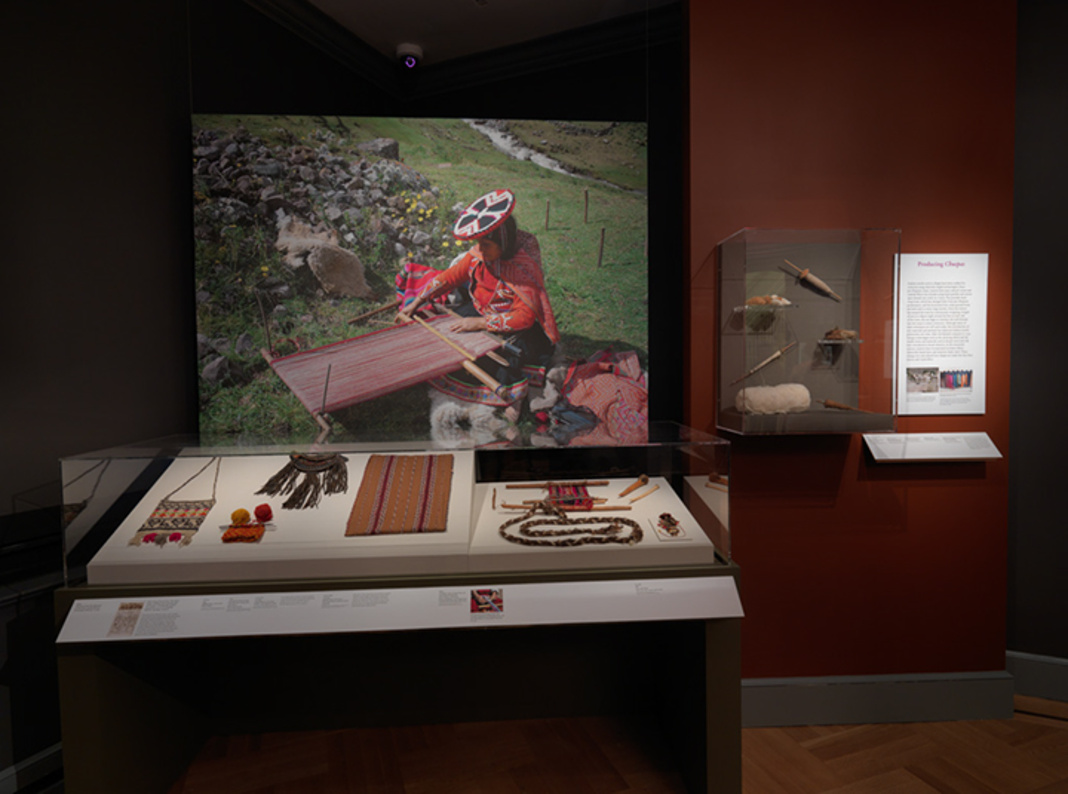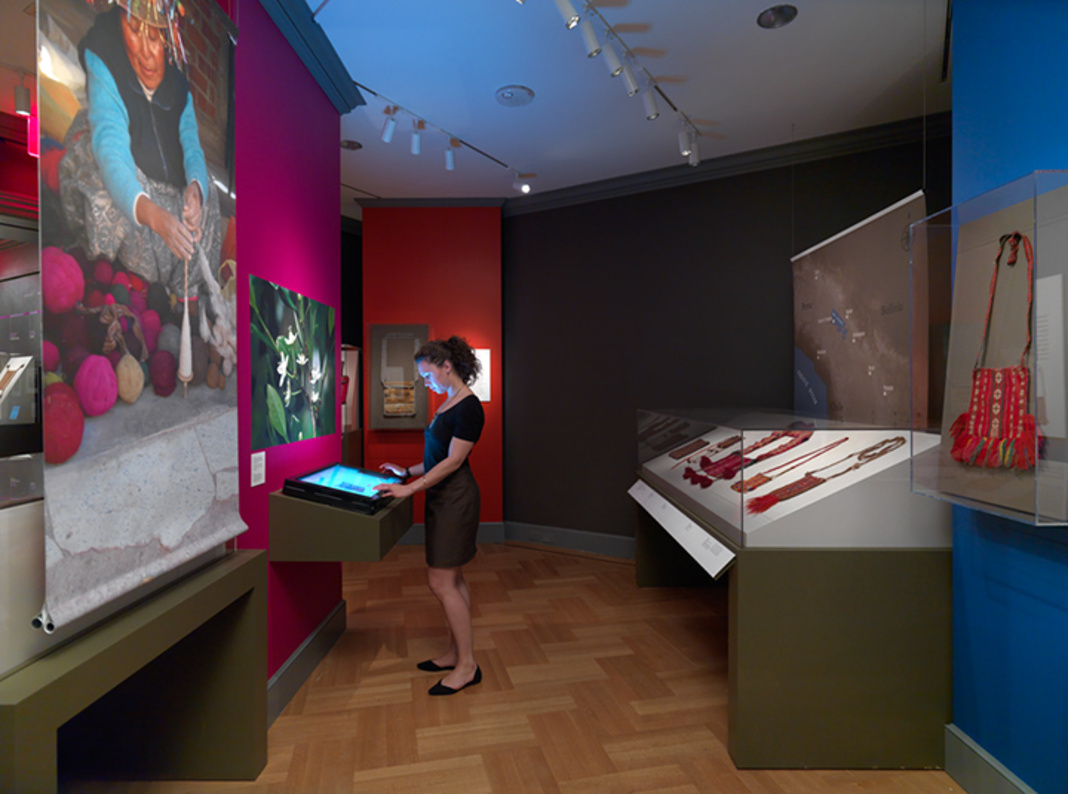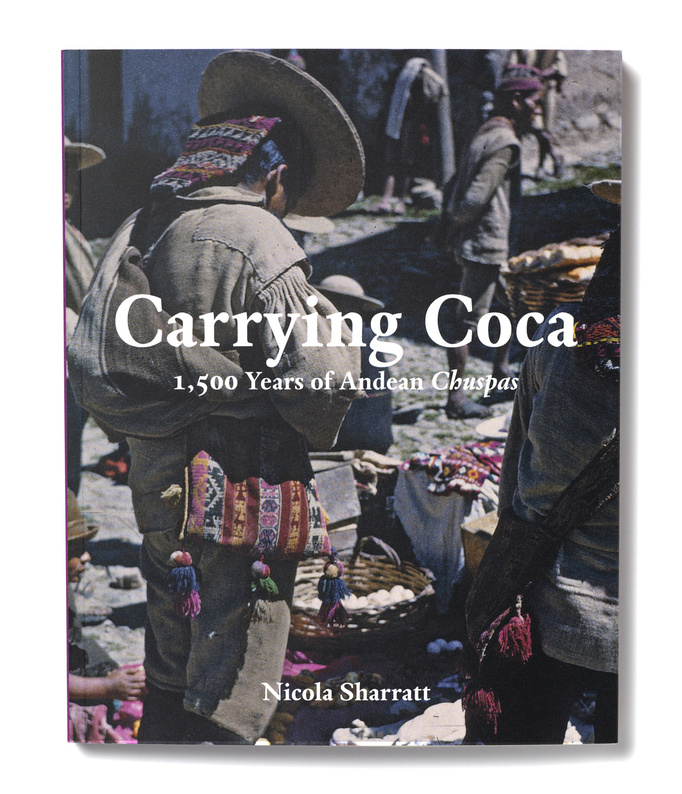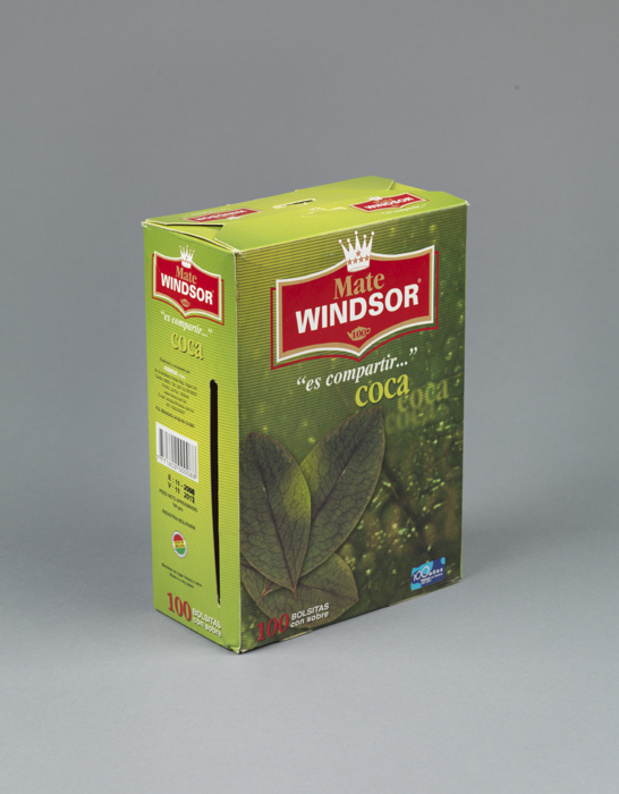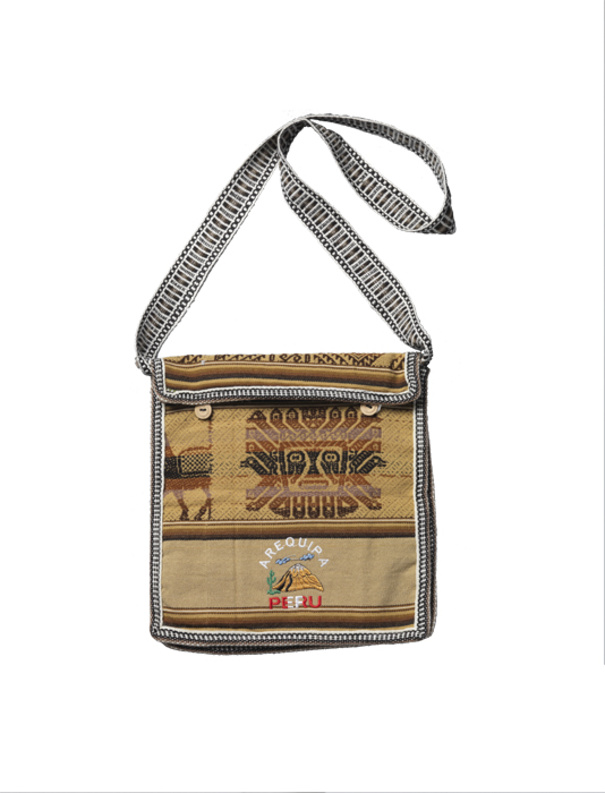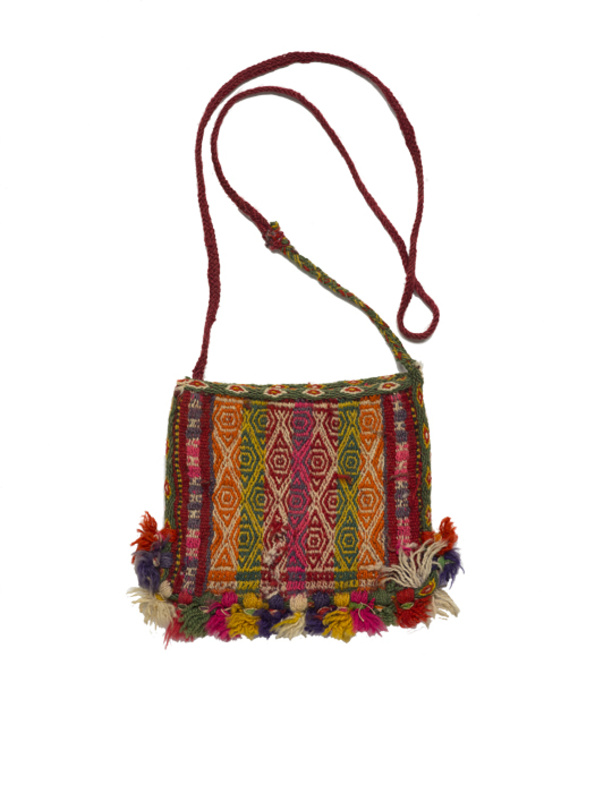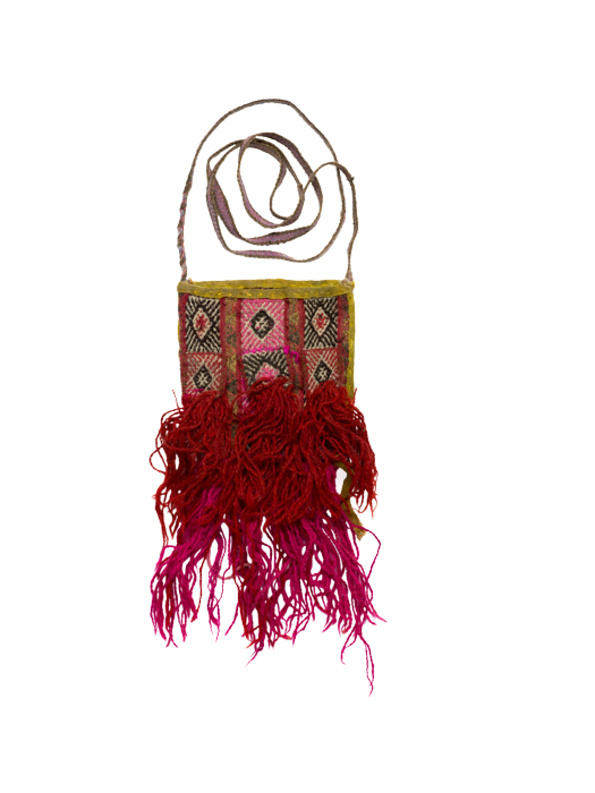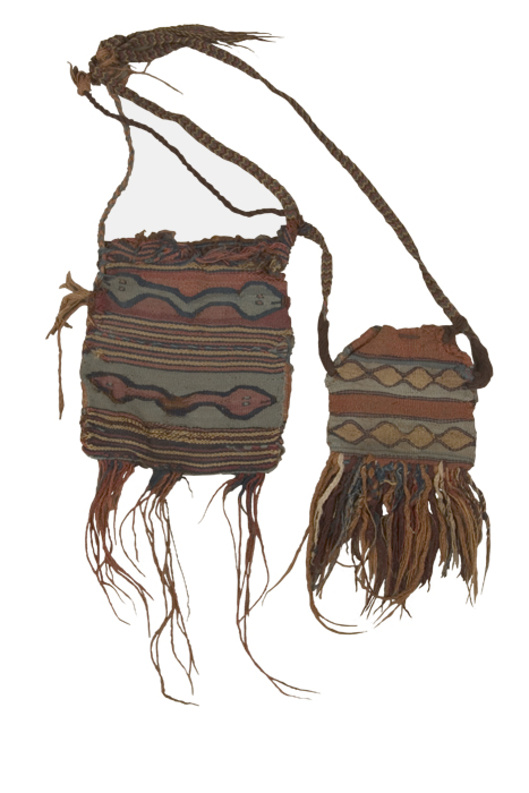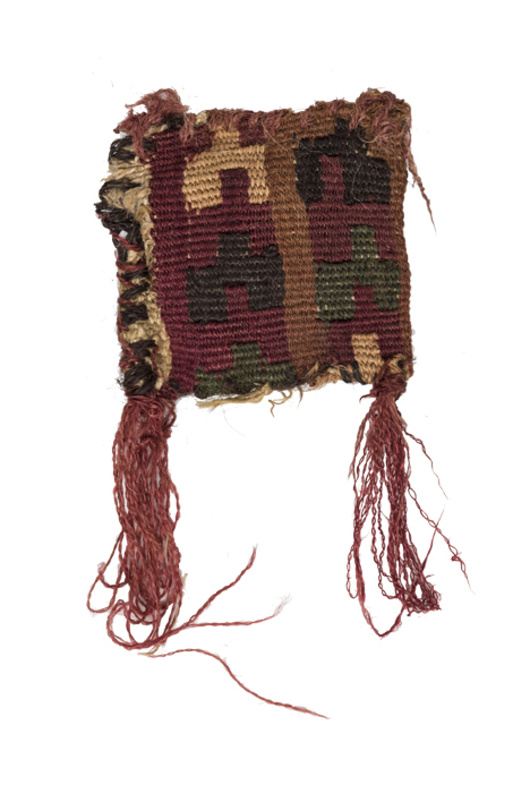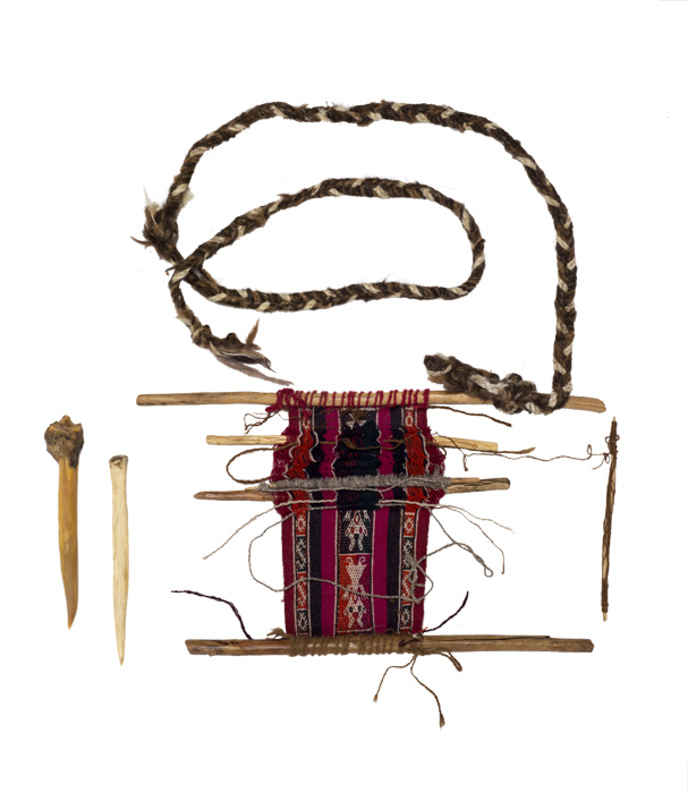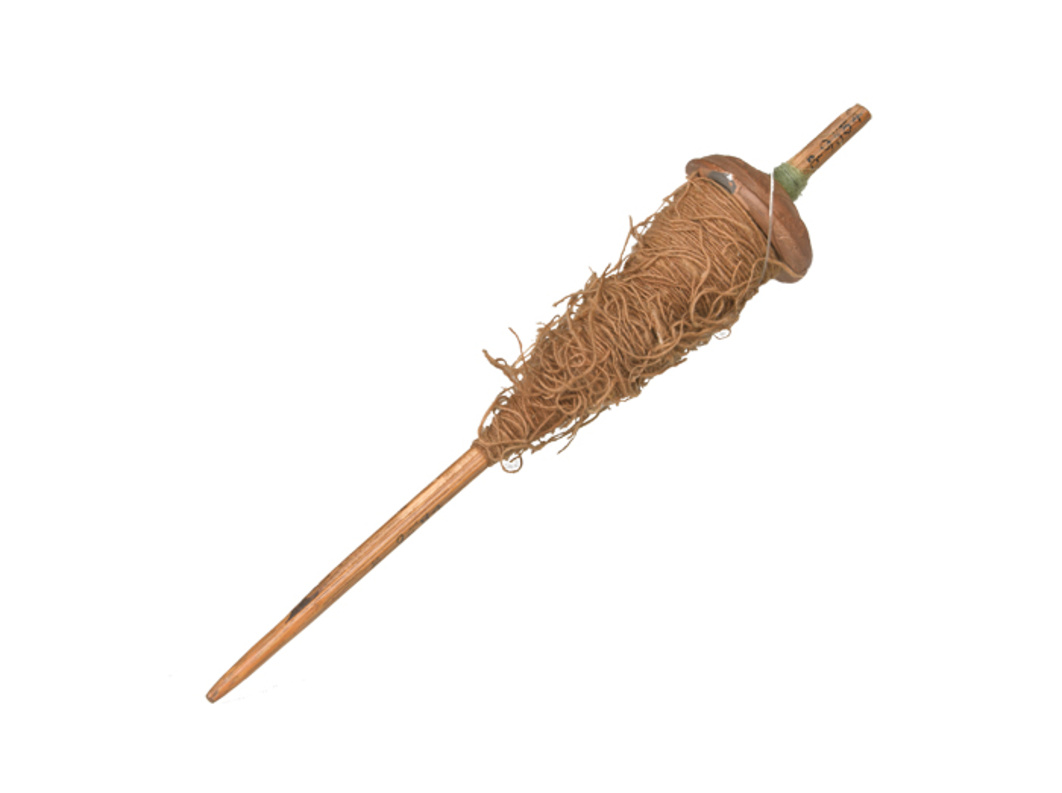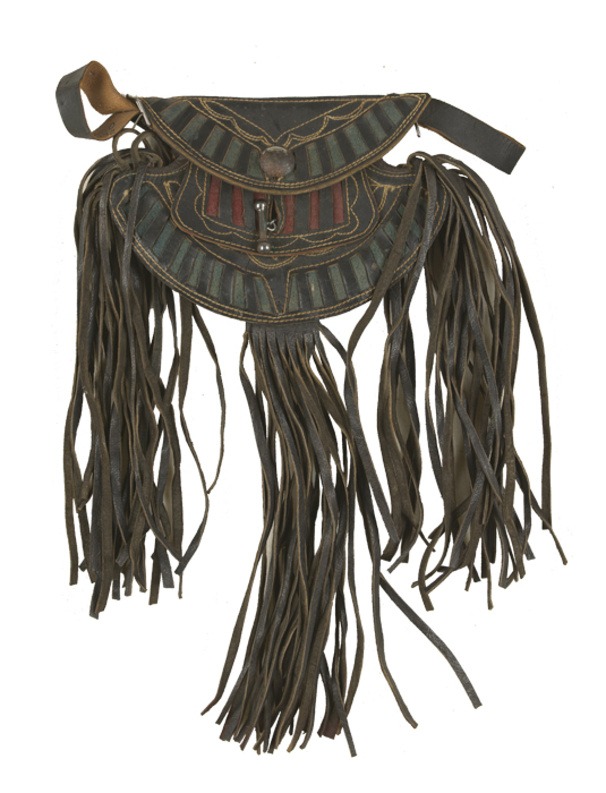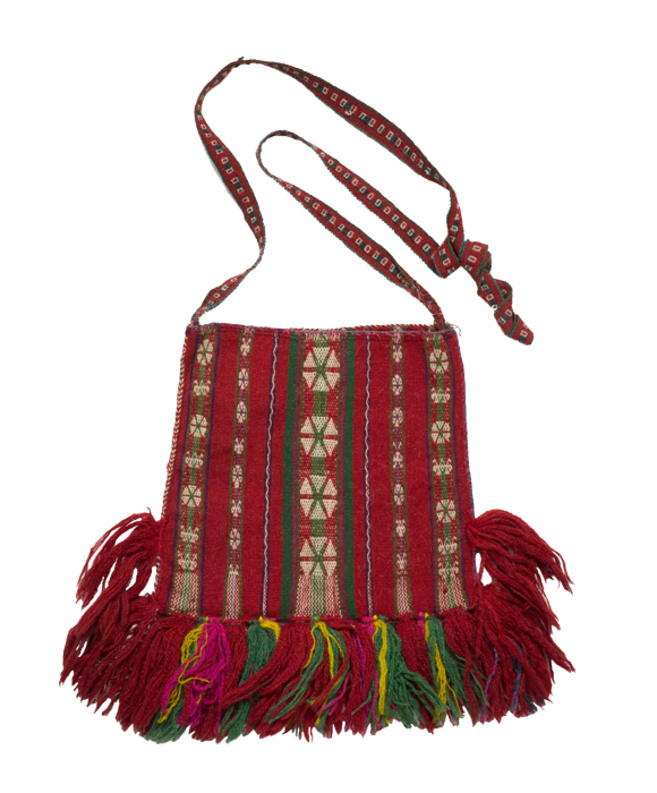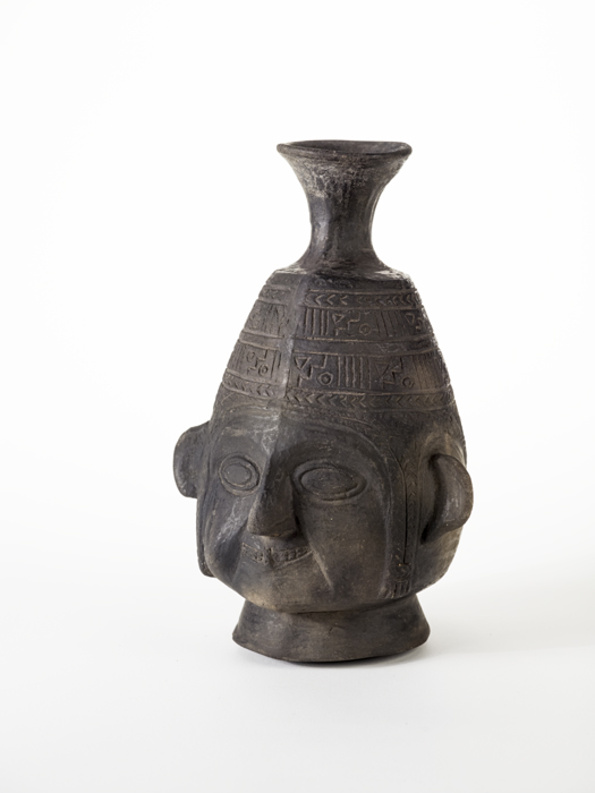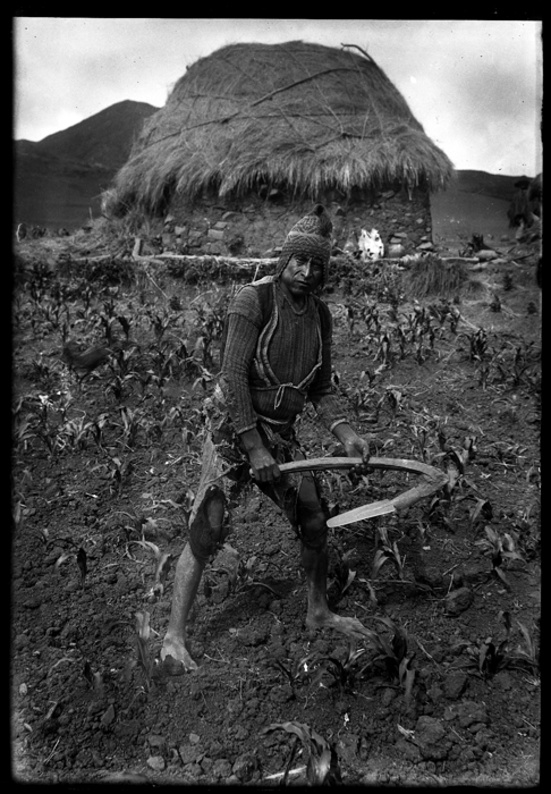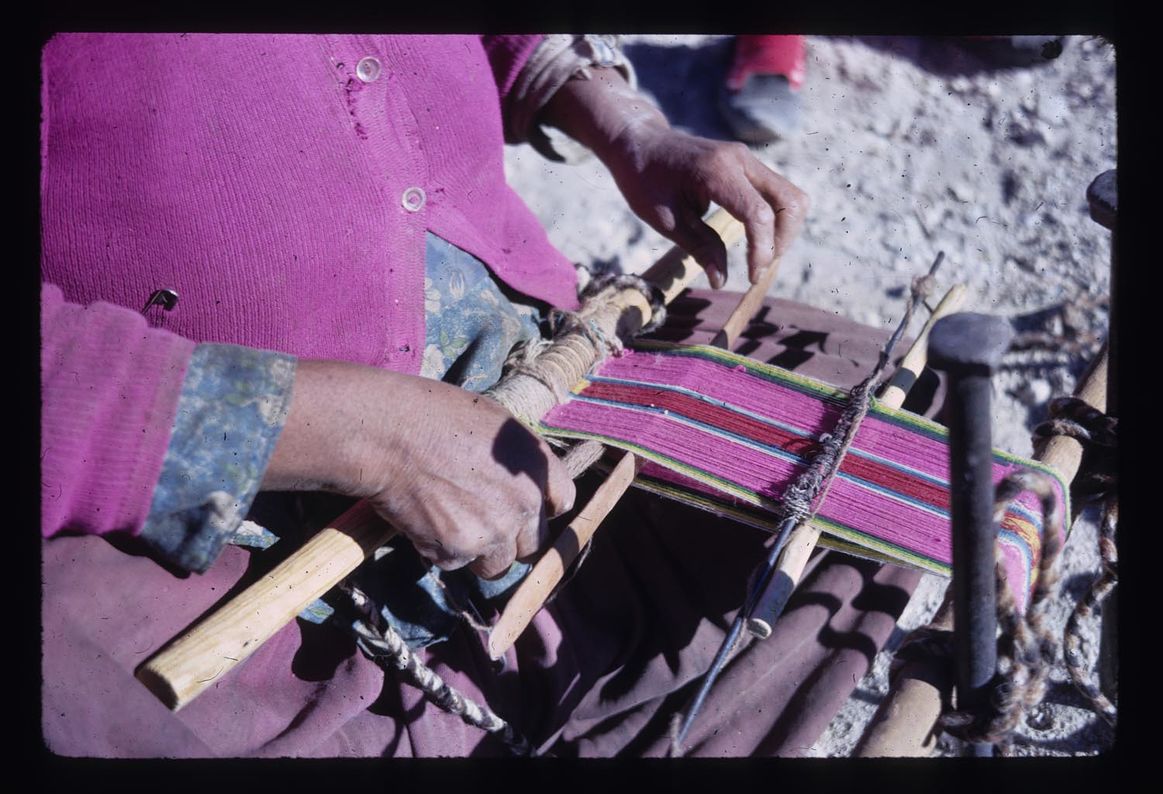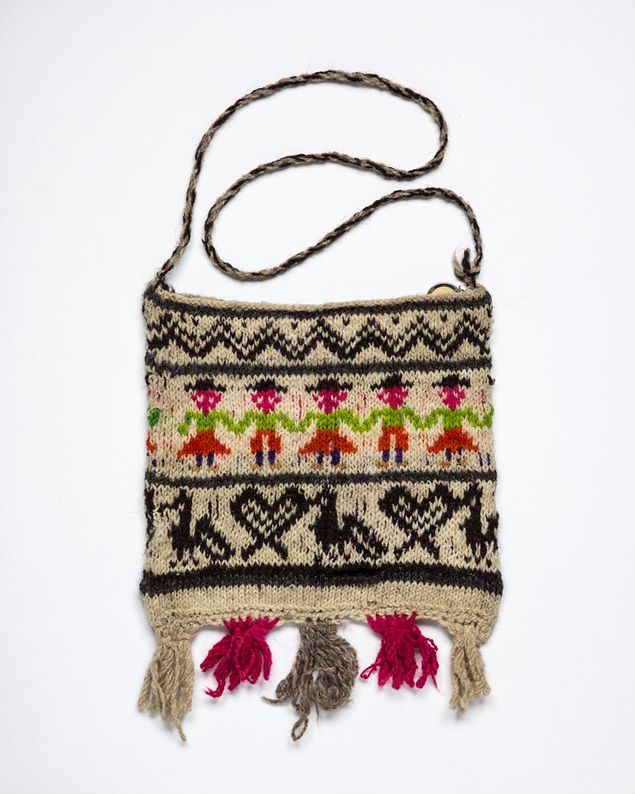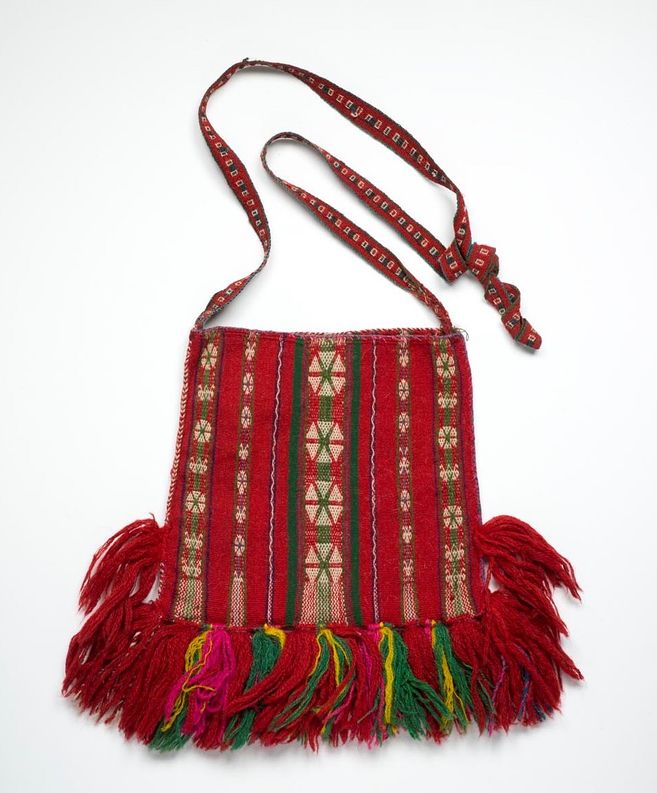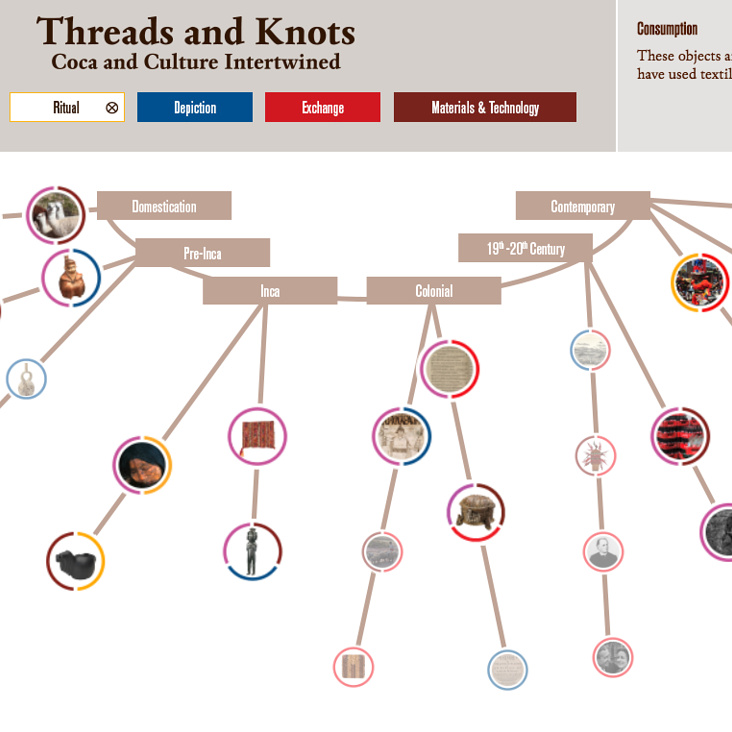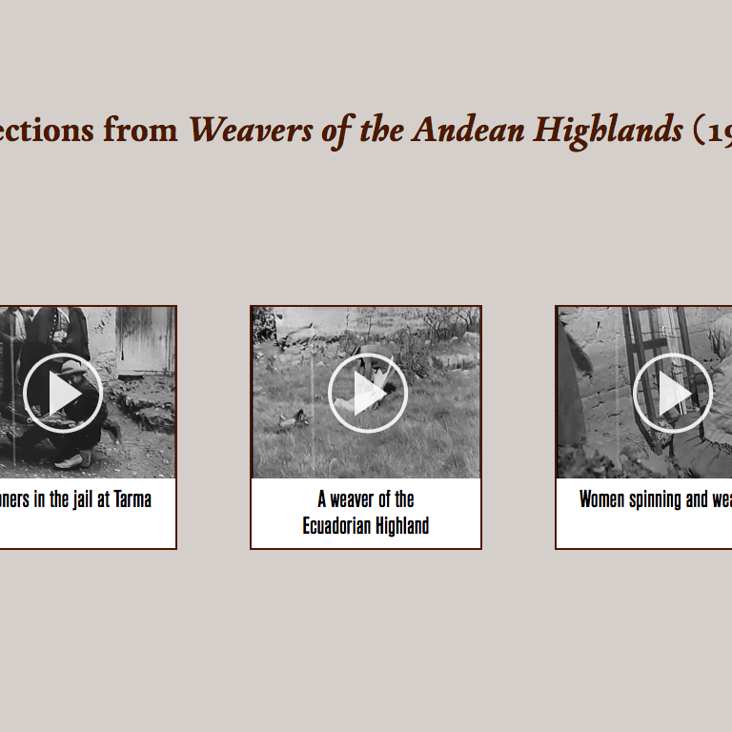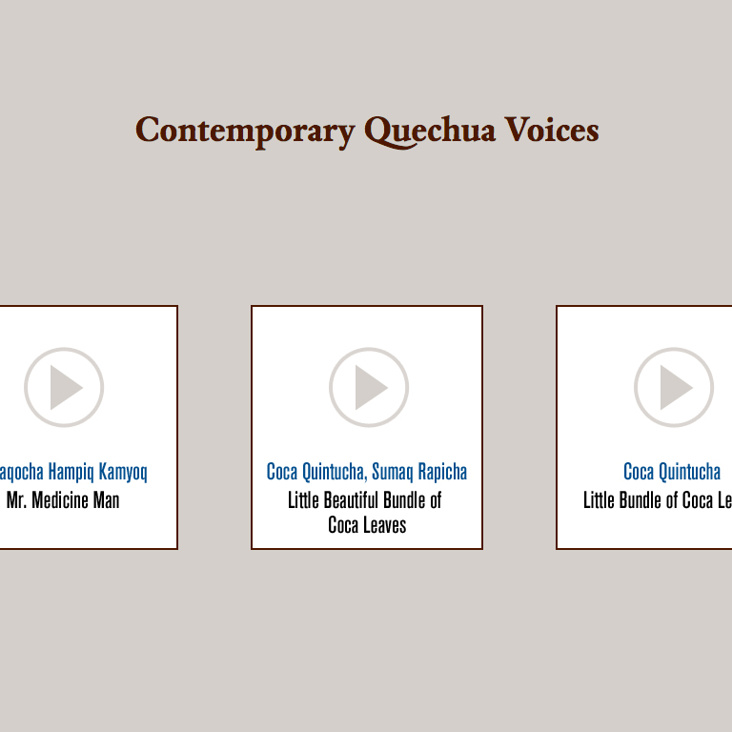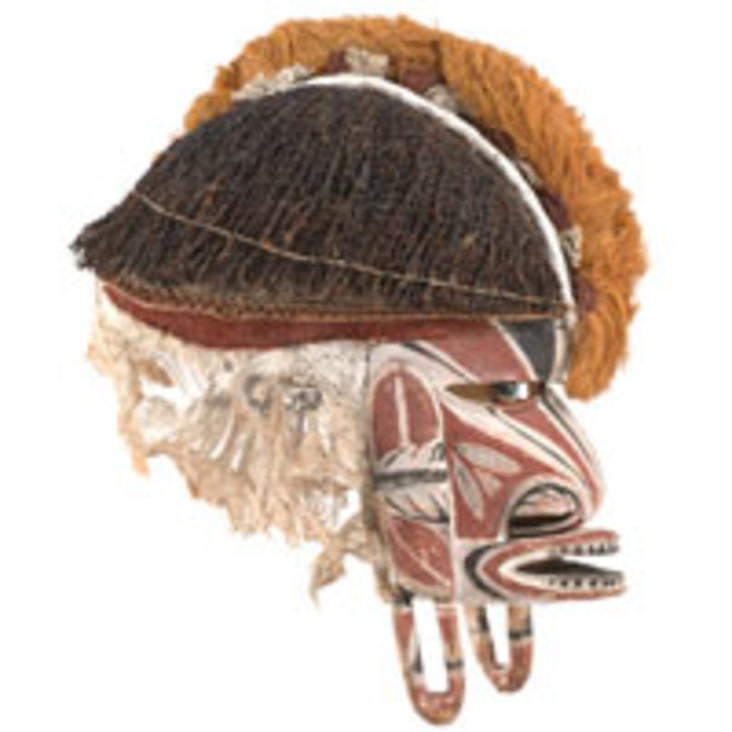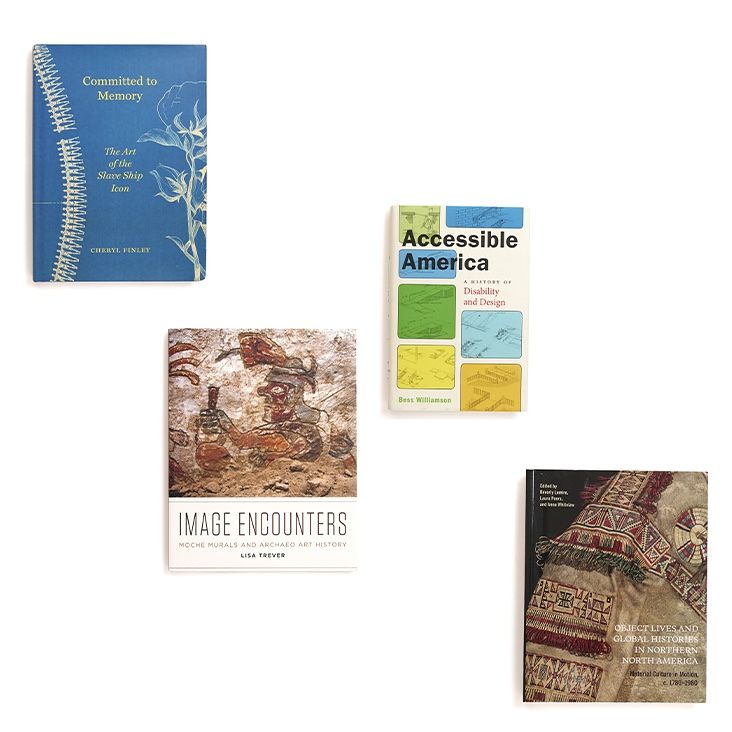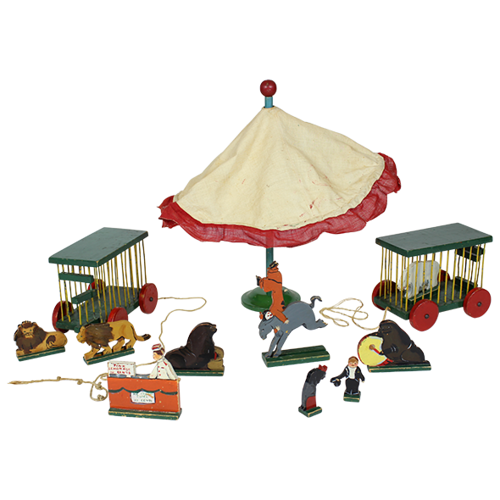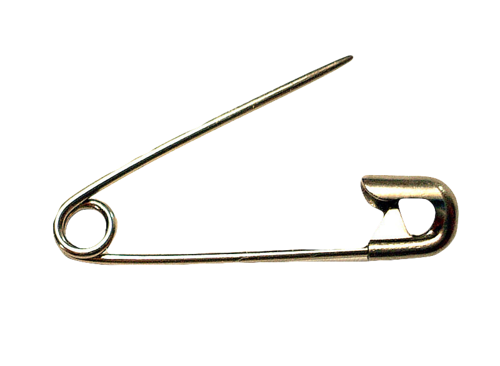“No Indian is without his chuspa or coca-bag, made of llamacloth, dyed red and blue in patterns, with woolen tassels hanging from it. He carries it over one shoulder, suspended at his side.”
—Sir Clements Markham, Travels in Peru and India, 1862
Carrying Coca: 1,500 Years of Andean Chuspas considered how two components of Andean life—coca leaves and hand-woven textiles—are brought together in the small bag called a chuspa and examined this traditional object in changing cultural and economic contexts. Curated by Nicola Sharratt, this groundbreaking exhibition highlighted the tension between tradition and innovation surrounding these socially important woven objects by presenting chuspas not as representations of a static, indigenous heritage but as the embodiment of social and economic change. In their actual and symbolic connection with coca, chuspas are unique among Andean textiles, essential to cultural practice, social relationships, ritual activity, and political negotiation. By investigating how these striking textiles are made, what they look like, who wears them, and when and how they are used, Sharratt revealed for the first time in an exhibition how the history of chuspas is a consequence not only of variations in Andean textile traditions but also of the story of the sacred and contested substance they carry.
A Focus Project curated by Nicola Sharratt, Bard Graduate Center–American Museum of Natural History postdoctoral fellow in museum anthropology. Focus Projects are small-scale academically rigorous exhibitions and publications that are developed and executed by Bard Graduate Center faculty and postdoctoral fellows in collaboration with students in our MA and PhD programs.

